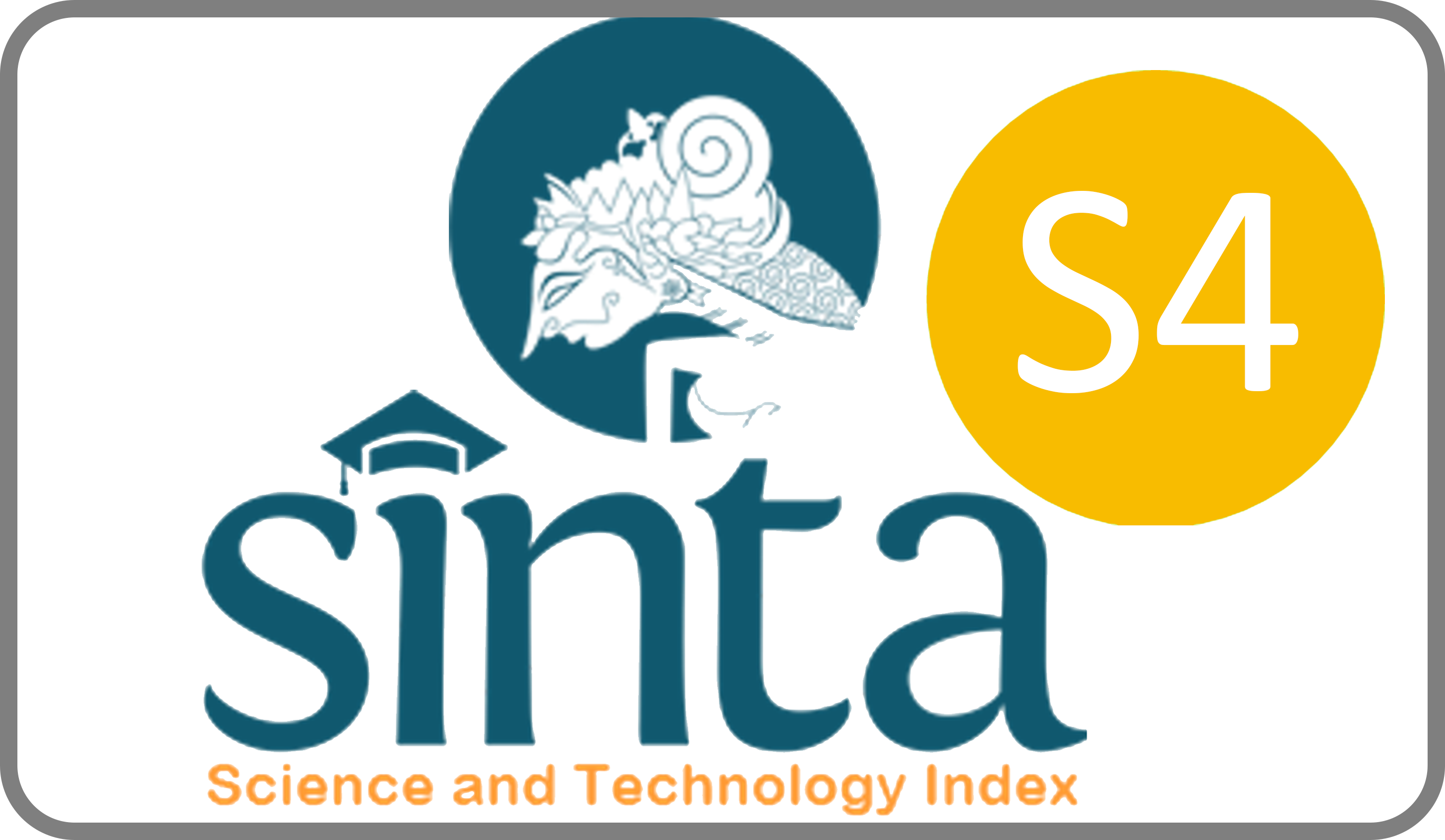CARING FOR PUERPERIAL MOTHERS THROUGH THE UTILIZATION OF TRADITIONAL HERBS TO OPTIMIZE THEIR HEALTH
Downloads
Puerperium is a critical period in which mothers often experience physical and psychological problems, however it is the beginning of the breastfeeding process and determines the success of exclusive breastfeeding. The use of traditional herbs for postpartum mothers is part of Indonesian culture that is starting to be abandoned in urban area. This community service activity aims to increase the knowledge, attitudes and behaviour of the community regarding the importance of postpartum maternal health care and the use of traditional herbs with proper processing methods as a promotive and preventive treatment. This activity was carried out in Gubeng Surabaya District with three stages including preparation, implementation of activities and evaluation. In the preparation stage, a situation analysis was performed. Activities were conducted by delivering lectures, discussions, video demonstrations and training. The evaluation was carried out by obtaining feedback from the social and community empowerment section as well as the pre-test and post-test questionnaires filled out by the participants. Based on the evaluation, the community service can increase participants' knowledge about postpartum health care and lactation management, thereby increasing awareness to play an active role by disseminating information to the community about the importance of family and the neighbourhood support for postpartum and breastfeeding mothers. The participants 'knowledge about the use of traditional medicinal plants for the maintenance of postpartum health and successful breastfeeding also increased, accompanied by an increase in the participants' willingness to prepare traditional jamu from fresh herbal ingredients themselves. This community service needs to be carried out in a sustainable manner with innovative delivery methods.
Amiri, A. and Gerdtham, U. (2013) ‘Impact of Maternal and Child Health on Economic Growth : New Evidence Based Granger Causality and DEA Analysis', (March), pp. 1–30.
Andrews V, Thakar R,Sultan A H ,Jones PW. 2008. Evaluation of postpartum perineal pain. Journal of Obstetrics and Gynaecological Reproductive Biology.
Avivah, S. M., 2012, Inventarisasi Ramuan Obat Tradisional Yang Digunakan Oleh Dukun Bayi Pada Ibu-Ibu Setelah Melahirkan Di Kecamatan Gamping, Godean, Minggir, Mlati, Moyudan, dan Seyegan, Skripsi, Fakultas Farmasi Universitas Gadjah Mada, Yogyakarta.
Bappenas 2014. Kebijakan Perencanaan Pembangunan Kesehatan tahun 2014. Kementerian PPN/Bappenas.
Grummer"Strawn, L.M. and Rollins, N., 2015. Summarising the health effects of breastfeeding.
Hanif S, Murtaza G, Memon MH. 2011. Factors associated of cessation of breastfeeding. J Dow University of Health Sciences Karachi, Vol. 5(1): 21-25.
Kavitha BR. 2013. A study to assess the effectiveness of structured teaching programme on knowledge regarding selected minor ailments of puerperium and its managementamong postnatal mothers in selected hospitals at kolar, Disertasi, Rajiv Gandhi University of Health Sciences, Bangalore.
Kemenkes RI (2018) ‘Menyusui sebagai Dasar Kehidupan', kementerian Kesehatan RI, pp. 1–7.
Maharlouei, N. et al. (2018) ‘Factors Affecting Exclusive Breastfeeding , O riginal A rticle', 6(3), pp. 260–271.
O'Hara MW, Wisner KL. 2013. Perinatal mental illness: Definition, description and aetiology. Best Pract Res Clin Obstet Gynaecol;[Medline].
Permenkes 2010. Peraturan Menteri Kesehatan Republik Indonesia Nomor : 003/Menkes/Per/I/2010 tentang Saintifikasi jamu dalam penelitian berbasis pelayanan kesehatan.
Riset Kesehatan Dasar. 2018. Badan Penelitian dan Pengembangan Kesehatan. Kemenkes RI.
Spiliopoulos M. 2013. Normal and abnormal puerperium. Diakses dari www.medscape.com
Surveys, H. (2015) ‘Maternal , newborn , and child health and the Sustainable Development Goals ” a call for sustained and improved', pp. 1511–1514. doi: 10.1016/S0140-6736(15)00517-6.
Suryawati C. 2007. Faktor social budaya dalam praktik perawatan kehamilan, persalinan dan pasca persalinan (studi di kecamatan Bangsri Jepara). Jurnal Promosi Kesehatan Indonesia Vol. 2, No. 1.
Taveras EM, Capra AM, Braveman PA, Jensvold NG, Escobar GJ, Lieu TA. 2003. Clinician support and psychosocial risk factors associated with breastfeeding discontinuation. Pediatrics 112: 108.
US Department of Health and Human Services. 2011. ‘The Surgeon General's Call to Action to Support Breastfeeding 2011'.
Usemahu KM, Rachman WA, Natsir S. 2013. Perilaku penggunaan obat tradisional pada ibu pasca melahirkan di desa Kailolo kabupaten Maluku Tengah. Universitas Hasanudin. Makasar.
Varghese CM. 2008. A study to assess the effectiveness of structured teaching programme on knowledge regarding selected minor ailments of puerperiumamong primi mothers in selected area of Raichur. Disertasi. Rajiv Gandhi University of Health Sciences, Bangalore.
WHO & UNICEF (2019) ‘Global Breastfeeding Scorecard, 2018. Enabling Women To Breastfeed Through Better Policies And Programmes', WHO/Unicef, (3), p. 3. Available at: http://www.who.int/nutrition/publications/infantfeeding/global-bf-scorecard-2018/en/%0Ahttps://www.who.int/nutrition/publications/infantfeeding/global-bf-scorecard-2018.pdf?ua=1.
Copyright (c) 2023 Nurina Hasanatuludhhiyah, Danti Nur Indiastuti, Yuani Setiawati, Nurmawati Fatimah

This work is licensed under a Creative Commons Attribution-ShareAlike 4.0 International License.
JLM by Unair is licensed under a Creative Commons Attribution-ShareAlike 4.0 International License.
1. The journal allows the author to hold the copyright of the article without restrictions.
2. The journal allows the author(s) to retain publishing rights without restrictions
3. The legal formal aspect of journal publication accessibility refers to Creative Commons Attribution Share-Alike (CC BY-SA).
4. The Creative Commons Attribution Share-Alike (CC BY-SA) license allows re-distribution and re-use of a licensed work on the conditions that the creator is appropriately credited and that any derivative work is made available under "the same, similar or a compatible license”. Other than the conditions mentioned above, the editorial board is not responsible for copyright violation.


















